A summer’s day in Ardara, Co Donegal. A group of men and boys sprawl on a grassy bank or dune. Most stare into the camera lens. Some are grinning or laughing. The image seems both more informal and more contemporary than we might expect from a 130-year-old photograph.
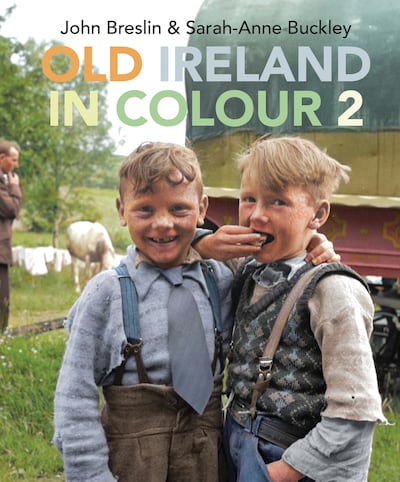
How much of that is due to the original image and how much to the fact that it has been colourised for a modern audience? And what should we make of the increasing popularity of adding colour to historical black-and-white photographs?
This week sees the publication of Old Ireland in Colour 2, John Breslin and Sarah-Anne Buckley’s’s successor volume to one of the biggest Irish publishing successes of recent years. Meanwhile, Rob Cross’s The Colour of Ireland, which similarly applies modern technology and historical research to bring colour to black-and-white photographs spanning the period between the mid-19th and mid-20th centuries, will be published in October. Both books are likely to figure prominently in the pre-Christmas bestseller lists.
The public’s appetite for colourisation is proven, but, as the authors of both books acknowledge, there are concerns about tampering with the original historical record. And it’s interesting to consider what exactly is going on when we react so strongly and so positively to the technique, and whether we lose something in the process.
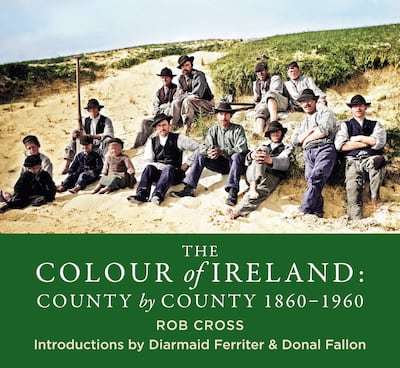
The concerns are not new. They date back at least 40 years, although colourisation has been around far longer than that, since well before the invention of colour photography. Handtinting was an accepted practice from the very start of the photographic era, in the middle of the 19th century, for stills and, subsequently, moving images. But digital technology made the process much easier from the 1980s onwards, leading to controversy about the “vandalising” of classic films such as Citizen Kane and It’s a Wonderful Life.
In the years since then, colourisation of classic films has been largely abandoned, but the recent success of Peter Jackson’s They Shall Not Grow Old showed how bringing colour and sound to archive footage of the first World War breathed life and immediacy into images that previously seemed remote and emotionally opaque to contemporary audiences. For many of us, it seems, these processes can act like a sort of time machine, helping us make a connection with an otherwise distant past.
This is clearly the rationale driving the authors of the two new Irish books. In their introduction to Ireland in Colour 2, Breslin, a professor of electronic engineering with a background in the tech industry, and Buckley, a history lecturer, acknowledge the continuing criticism of colourisation in some quarters, but they argue that their work is “part of the democratisation of history, a tool to develop empathy and a connection with the past while the original photograph remains intact”. Cross’s book addresses the issue more comprehensively, presenting the black-and-white originals alongside the colourised pictures and including essays by two historians, Diarmaid Ferriter and Donal Fallon.
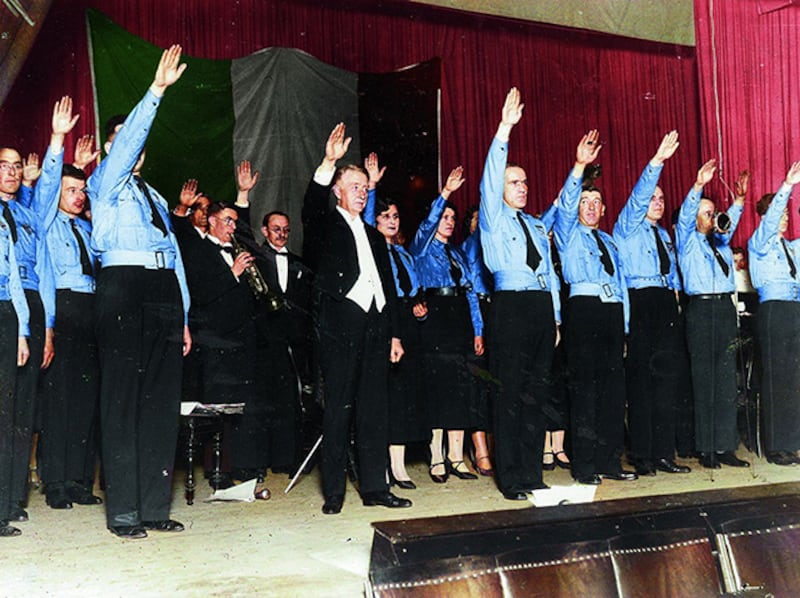
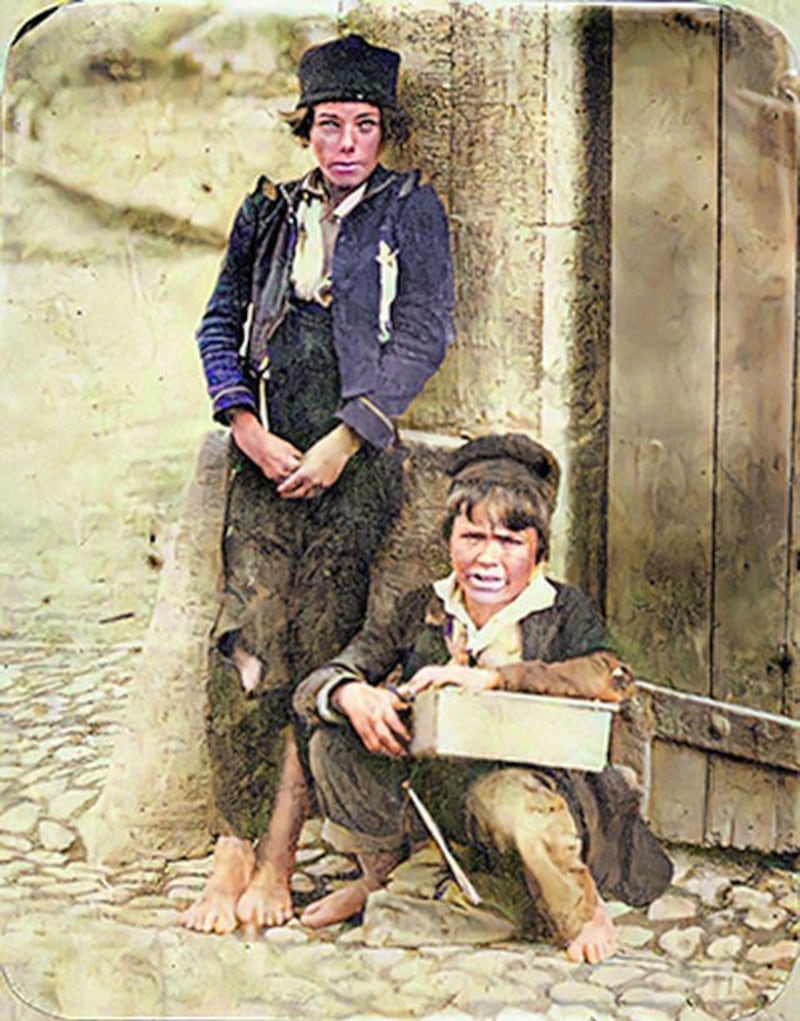
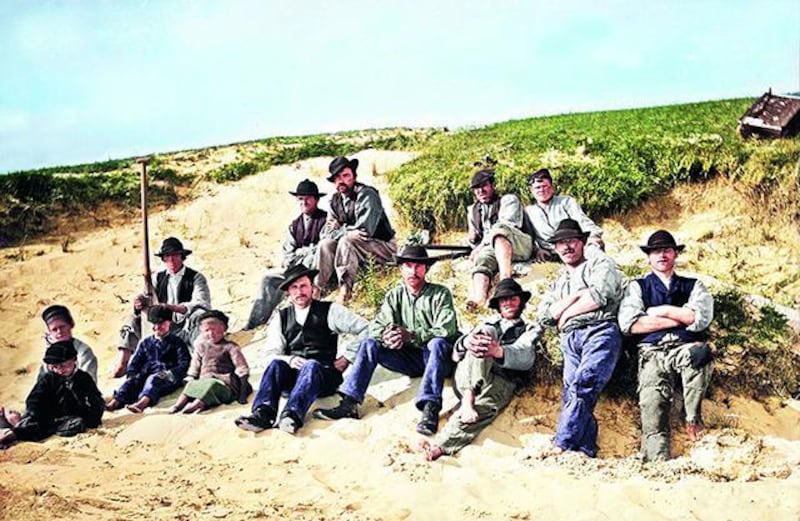
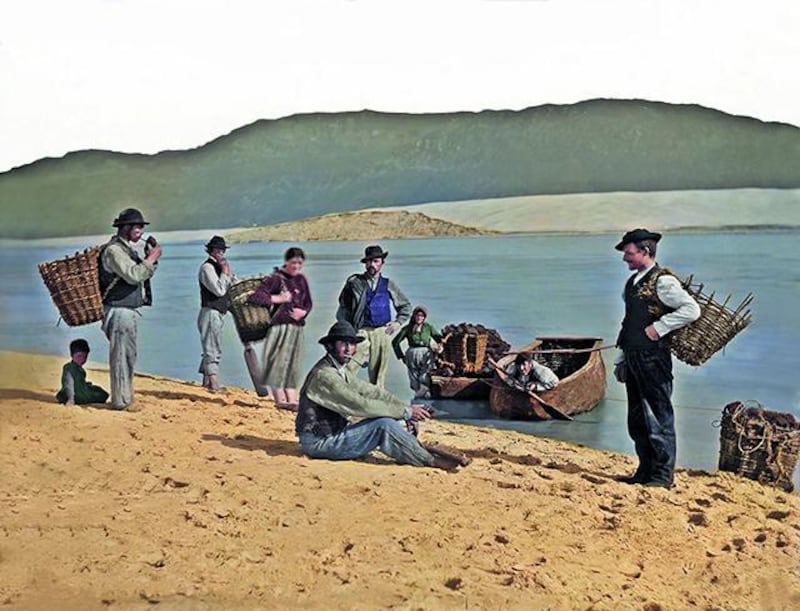
Ferriter, in particular, is clearly unconvinced by the ethics of the whole project. “The original images possess a uniqueness that was subsequently interfered with,” he writes. “It is true that the originals remain to be viewed, but the increasing momentum behind colourisation and the unending quest to ‘improve’ on things, or make them easier for us to relate to, also holds out the danger of the originals becoming marginalised.”
Fallon is more sanguine. “The images presented here do not attempt to replace their original sources, he writes. “Rather, they may serve as a fascinating engagement with the past which could lead the viewer to explore the rich archival collections from which Rob has selected them. They also serve a very useful purpose in making us think about images more broadly – if colourisation is a manipulation, what of looking closer at historical images in other ways?”
Cross, who attaches as much importance to the restoration of damaged or degraded images as he does to colourising them, would presumably agree. And it can often be difficult to tell how much the emotional impact of some of the images reproduced here rests on colourisation at all. One of the earliest pictures in Old Ireland in Colour 2, of two Tipperary children in the years immediately after the Famine, is both deeply strange and familiar at the same time. Those qualities were there in the original image.
In some cases the viewer inevitably wonders how some editorial choices were made. Why is that swimsuit in Dún Laoghaire Baths red and the other one blue? In others, such as a photograph of a 1934 Blueshirt rally, the choices were rather more obvious.
Both books heavily feature panoramic streetscapes and familiar landmarks. Unsurprisingly in this centenary year, both include many pictures from the War of Independence and Civil War. Michael Collins features prominently. A couple of photographs appear in both volumes. All of this is fine, and may well reflect the tastes of the target audience as well as what’s available in the archives. But some of the photographs have been reproduced many times before and one wonders whether there was much merit in colourising them.
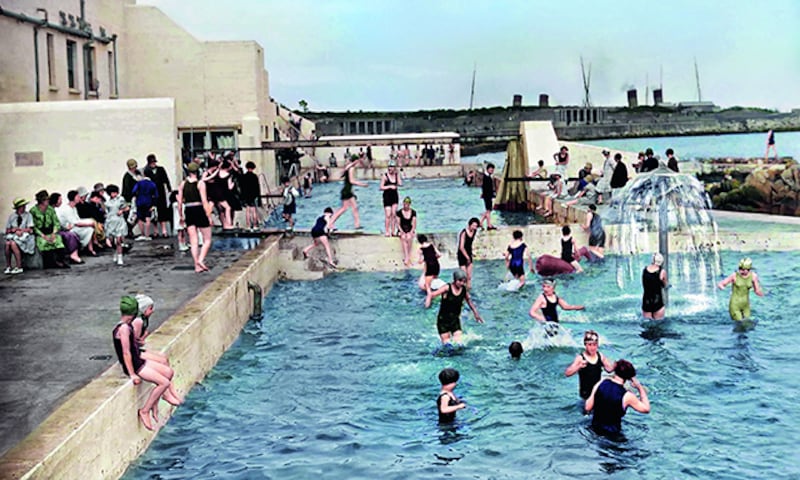
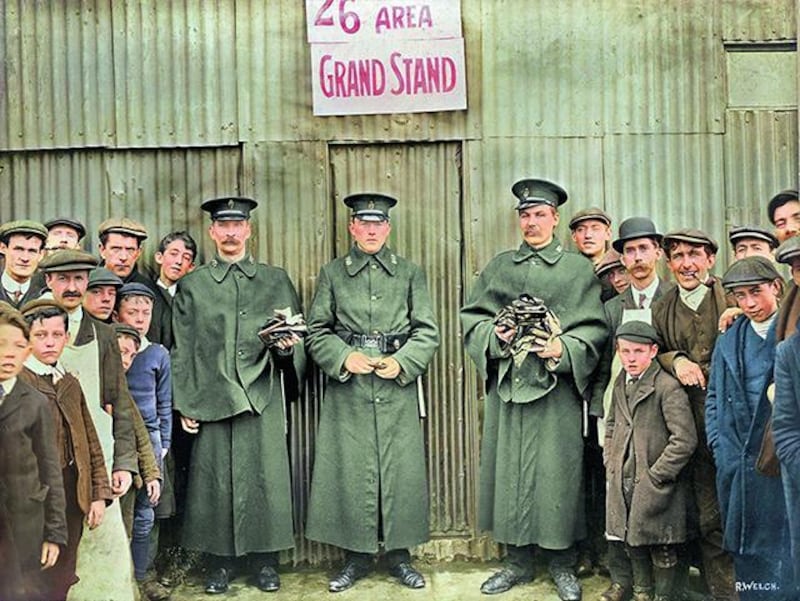
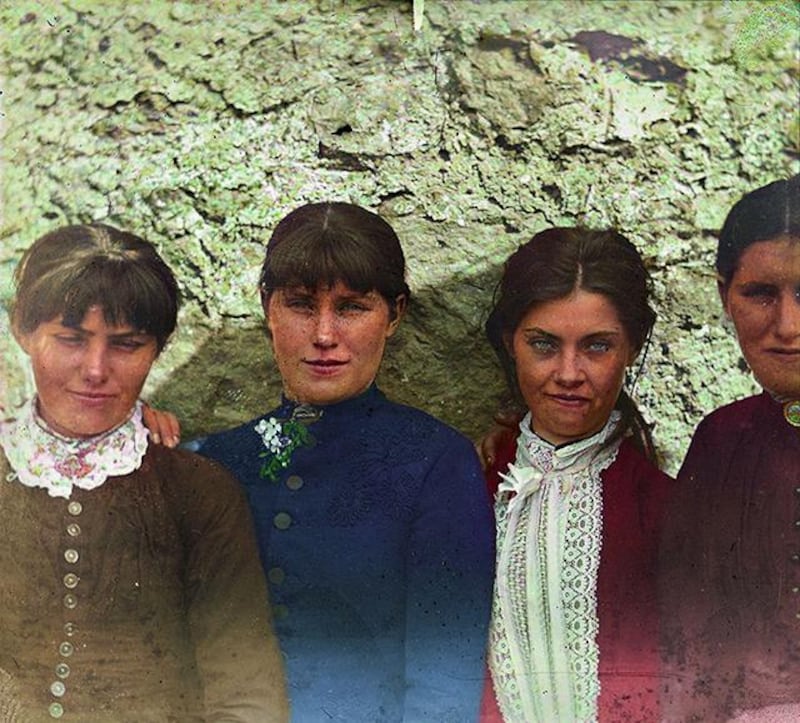
Also, to these eyes, the process works best when picture resolution is high and focus is sharp. And a couple of choices are bewildering. The most modern photograph in Old Ireland in Colour (perhaps deliberately tongue in cheek) is a 1964 portrait of Samuel Beckett, a man whose face was surely made for black and white.
But, for me, the images that really resonate and transport are of less well-known people brought vividly back to life. An unnamed fiddler straight out of a Boucicault comedy grins amiably while pretending to play his instrument (which appears to be missing a couple of strings). Colourisation draws our eye to the detail and texture of his clothes, described in the book as “a heavy frieze coat, which was virtually waterproof, corduroy trousers and strong nailed boots” (Old Ireland in Colour 2 pays particular attention to the history of dress and material culture). A policeman sternly displaying the empty purses discarded by pickpockets following a Home Rule rally in Belfast brings comic humanity to an era often defined purely by its headline historic events.
Most of all, the portrait of the O’Halloran sisters of Bodyke, Co Clare, feels like it could have been taken this week rather than in 1887, when the sisters threw cans of scalding water to ward off besieging bailiffs, “and Honoria even managed to grab the ‘sword-bayonet’ of one of the policemen, who was trying to come through a window”. Even without this information, you’d just know by looking at them not to mess with the O’Halloran sisters.
Old Ireland in Colour 2 is published by Merrion Press. The Colour of Ireland, County by County, 1860-1960 will be published by Black and White on October 14th


















